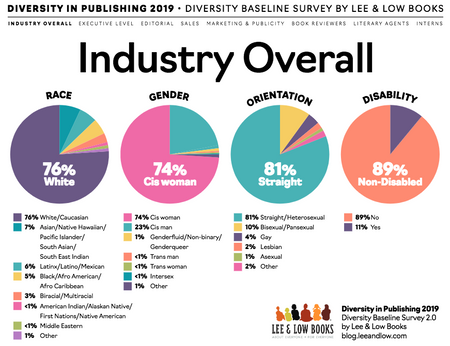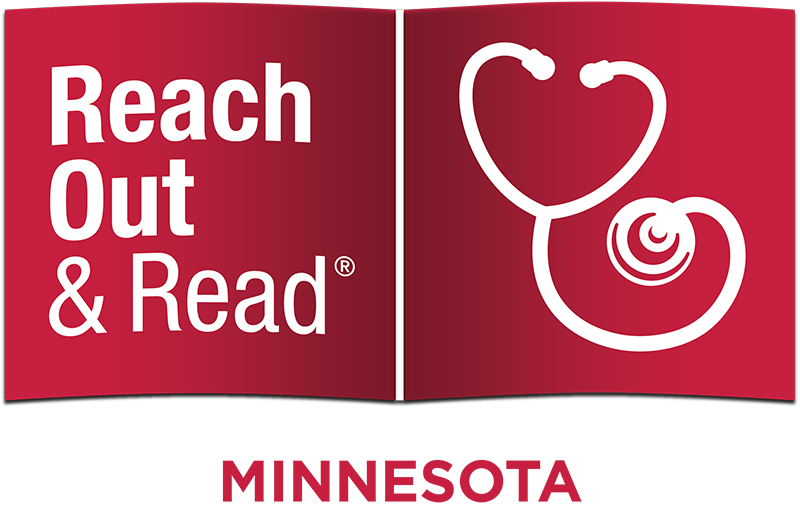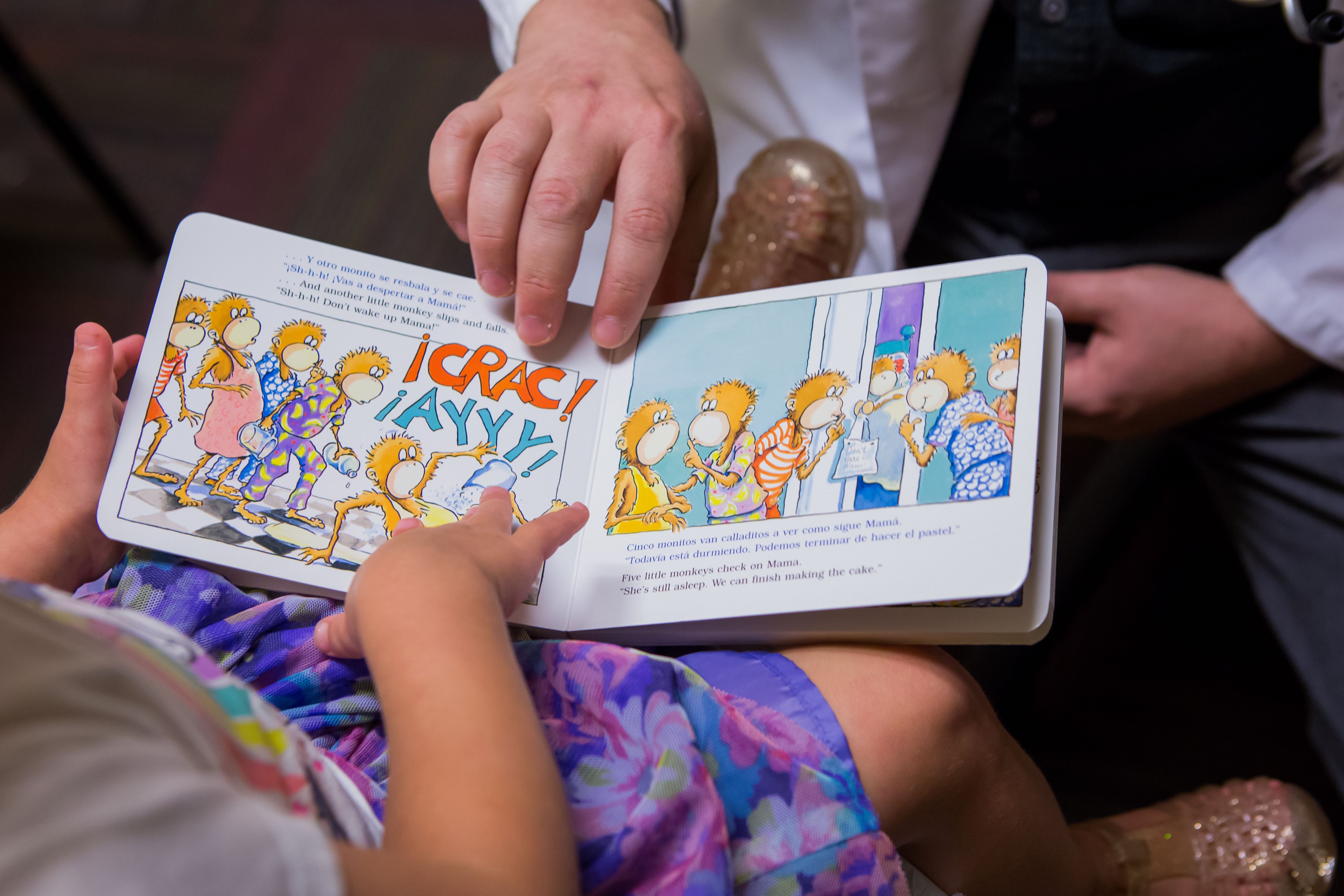When it comes to Children's Books, Representation Matters in a Big Way
The Next Page: A Conversation about Diversity in Children's Books and Family Health
We invited Sarah Park Dahlen, professor of Library and Information Sciences at St. Catherine University, and our Medical Director, Dr. Gigi Chawla to discuss how diversity in children's books can affect children's beliefs, and their health, for the rest of their lives.
The messages that children receive in their first years of life can affect their beliefs, and their health, for the rest of their lives. When a young child is read to, their brain absorbs vast amounts of information: they detect patterns and imitate the language they are hearing, they identify and compare the images and letters on the page, they feel the textures of the pages and the touch of their caregiver and sense they are loved and cared for. However, beyond these concrete senses, they are also absorbing the ideas, attitudes, and messages that the book, and their loved one reading it to them, share.
That’s why it’s so important that we take a critical look at what kinds of messages our books are sending to our young children. Here at Reach Out and Read Minnesota, we want to make sure that the books that we share with our young learners are empowering and inspiring for every child. Whether it's a touch and feel book for infants, or a storybook for a child about to enter school, we want every child to see a world of possibility for themselves in the books they read.
Last week we invited Sarah Park Dahlen PhD, professor of Library and Information Sciences at St. Catherine University, to join our Medical Director, Dr. Gigi Chawla, in a conversation about race and representation in children’s books, and about how we can use children’s books to empower families and build stronger, healthier foundations for children.
At the beginning of her presentation, Professor Dahlen noted just how great the stakes are: “A lot of times I hear people say, ‘Well they’re just children’s books. They’re neutral. They’re not political’. Well actually that’s not true. Because these books have an impact on how we think… When these attitudes take root, they take root in childhood. And a lot of times they come through the books that we hand to children. These books often come from people children love and trust: a teacher, a librarian, a family member.”
“If the book contains harmful stereotypes, and the child is not aware that this is a harmful stereotype, then these stereotypes take root during that very early time, and unchecked, these can go up the pyramid of hate into more severe, more overt forms of violence and discrimination.”
The full conversation is available to view in the link above. We've highlighted a few of Professor Dahlen and Dr. Chawla's key points below:
- Discrimination and racism have an enormous impact on children's emotional health. Dr. Chawla pointed out that racism, which often manifests itself in the forms of Adverse Childhood Experiences (ACE's) and toxic stress, has a powerful measurable impact on children's lifelong health. Professor Dahlen shared how her family experiences the toll of racism on a personal level. “I have a six year old and when she and I talk about racism against people who look like us… I can see the impact it has on her. It is critically important that we start at a young age talking to children about racism, and how to fight back against racism.”
- The world of publishing does not represent the diversity of the population as a whole. As Professor Dahlen pointed out from the included graphic, in 2019, the publishing industry was “overwhelmingly white, overwhelmingly female, overwhelmingly heterosexual, and overwhelmingly nondisabled.”

- Few books about people of color are written by people of color. While representation of more diverse characters in children’s books has increased in some sectors in recent years, the same is not necessarily true of books written by people of color. Dahlen cited Paula Chase Hymen who notes that in 2017 only 33% of books about African American children were written by African American authors. This is actually an 18% decrease from 10 years before. This lack of authentic, first person storytelling often means the representations of characters of color end up distorted or incomplete.
- Many children's books that we consider "classics" actually perpetuate stereotypes. Dahlen noted a few examples of potentially harmful stereotypes and attitudes perpetuated by popular children’s books which misrepresent characters of color, including the classic picture book Tikki Tikki Tembo, which conflates Japanese and Chinese cultures and perpetuates the idea of nonsensical Asian names and language.
- Diverse books are essential in both diverse and not-so-diverse communities. Professor Dahlen highlighted the importance of having diverse books available in both diverse and more homogeneous communities: “Are you in a pretty homogeneous community? Guess what? Your readers need diverse books too. This might be one of the first ways they encounter people who are unlike themselves. And if you’re in a diverse community, then your readers need to see themselves in those books.”
- Every family needs to see diverse heroes and protagonists. Dr. Chawla pointed out that, in addition to providing families of color with books that reflect their own identities, she will often intentionally give white families diverse books too: "I have to admit as a pediatrician, one of my very favorite things, is taking a book of diversity and giving it to a white child, and having them see that really powerful message that a brown person, that a black person can be a protagonist, is a hero in a story.”
- Pediatric care—and Reach Out and Read—can be a catalyst for change. Dr. Chawla encouraged her medical colleagues to tackle the tough issues with the families they serve: “I think it’s up to pediatricians and clinicians to open that dialog, and make sure that they have a voice in helping families start to navigate those conversations and recognize how important it is to have your child grow up as an anti-racist.” She pointed to the Reach Out and Read program as a key opportunity to reach families. "These conversations are so important. While the action may seem focused and small, the impact for society is enormous and profound. It gives us an opportunity to put our stake in the ground and have a concerted effort towards improving the health and health outcomes of our entire society.”
- The most important question: what does this book teach? Professor Dahlen encouraged every parent, teacher, pediatrician, and caregiver to ask a simple question before reading a book to a child: “What does this book contribute to a child’s understanding of themself, and the world in which they live?”
- Take Action. Professor Dahlen highlighted a few concrete actions every individual can take to promote diverse literature in their communities and use books to empower children.
- Buy, read, and gift diverse books. The most direct way to support diverse books is to buy them!
- Push for diverse books in your local schools and libraries.
- Give children a wide range of diverse books to choose from.
- Use your local library as a resource, and encourage others to do the same. Librarians can often direct families toward excellent diverse learning resources.
- Follow, learn from, and support diverse book advocates. Follow #WeNeedDiverseBooks, #WNDB, and #OwnVoices on Twitter. Use Social Justice Books and Reading While White as resources to learn more.
We encourage you to learn more about Professor Dahlen's work on her website SarahPark.com and to follow her on Twitter at @Readingspark
Thank you for learning with us!
Reach Out and Read Minnesota is actively seeking new ways to support diverse children's literature and to support families experiencing racism. Reach out to us at info@reachoutandreadmn.org
8/25/20



